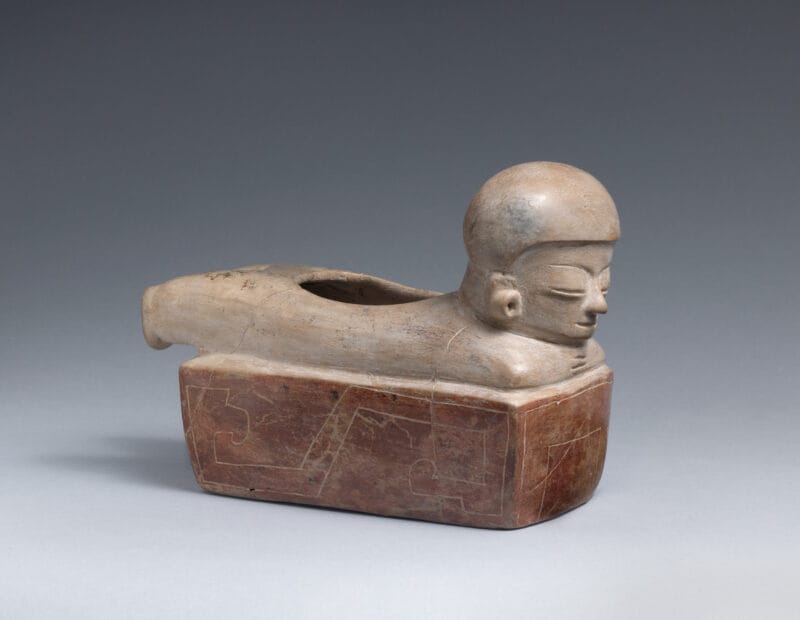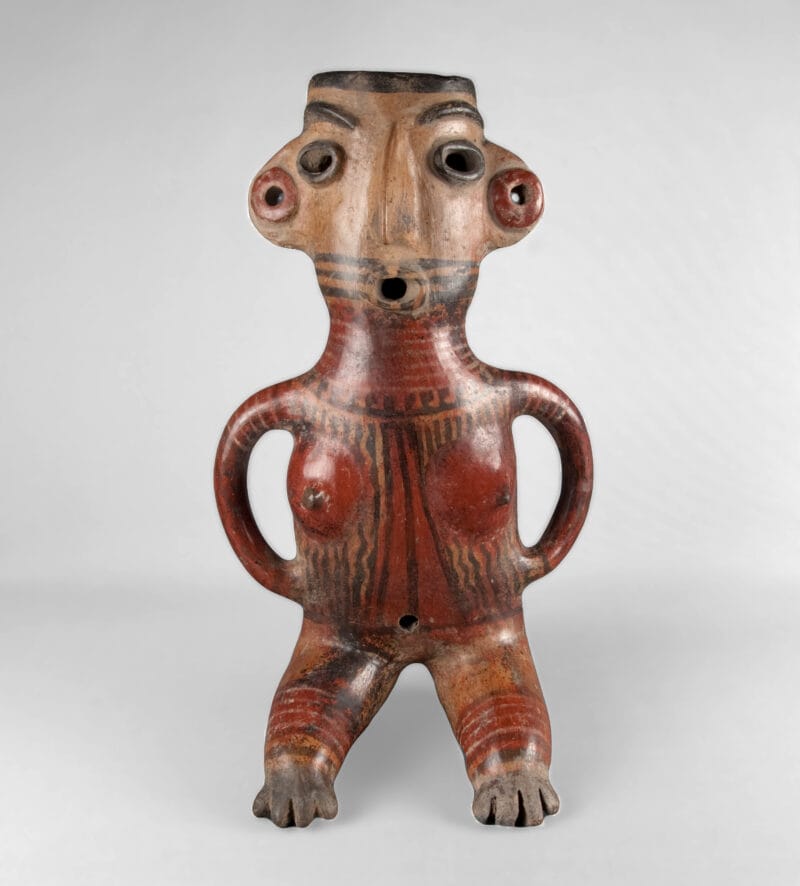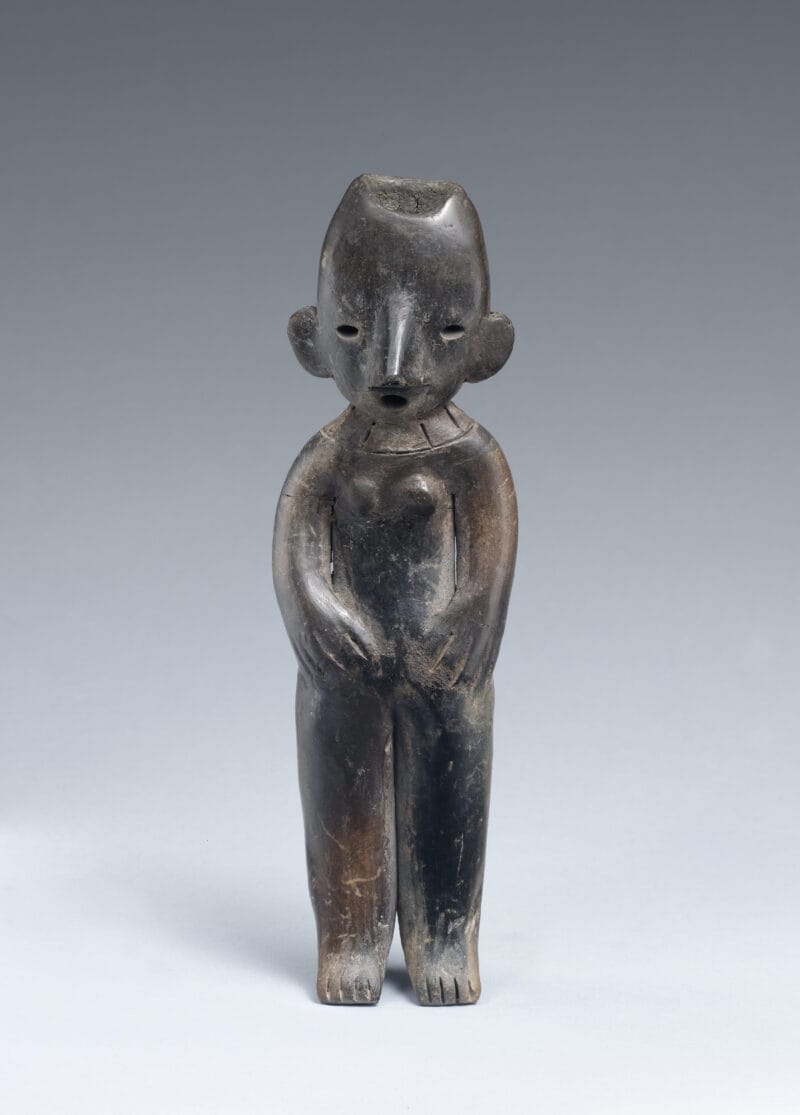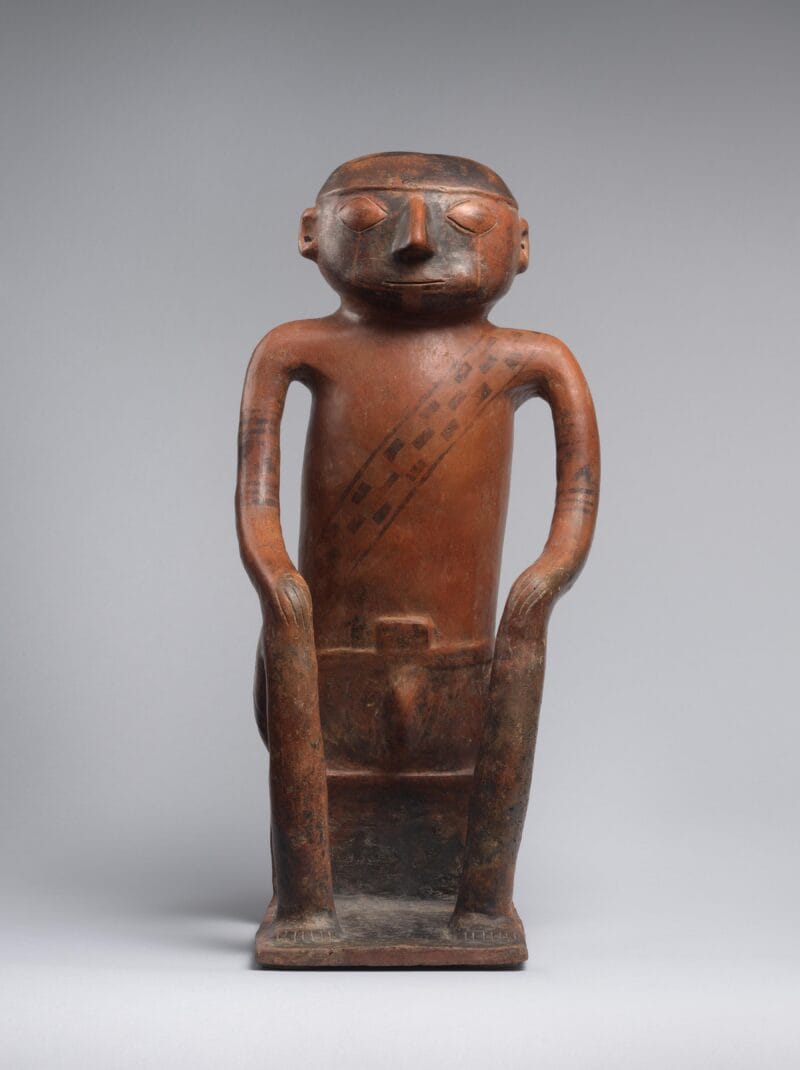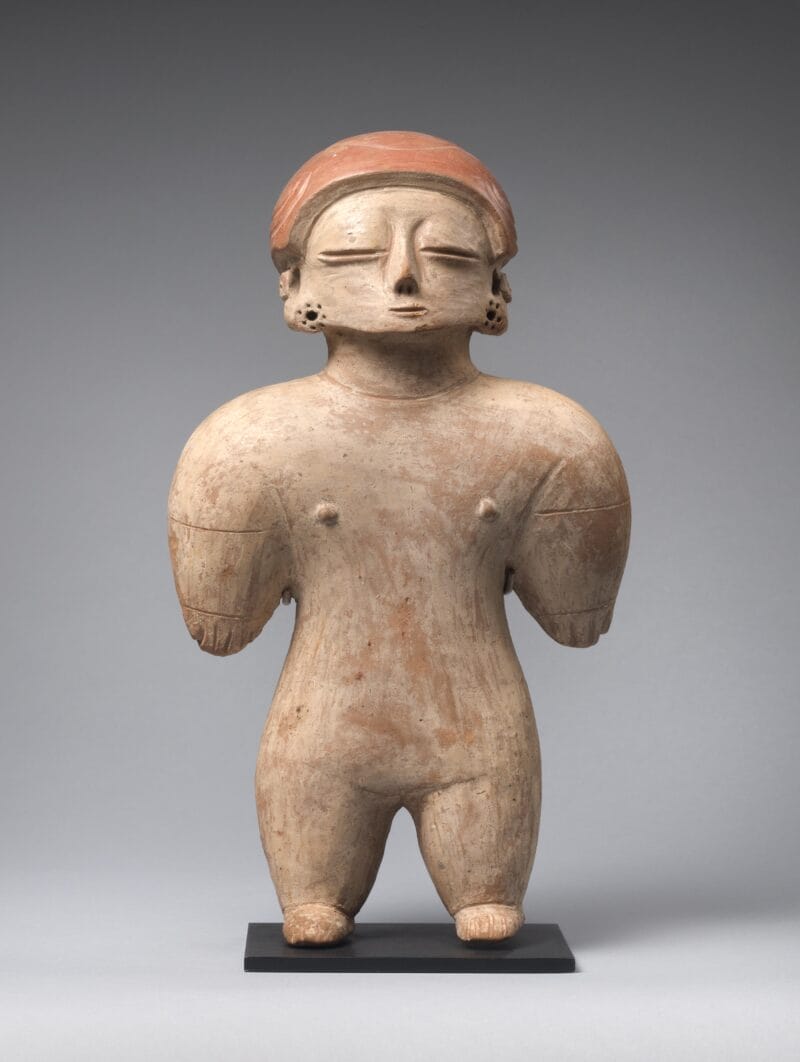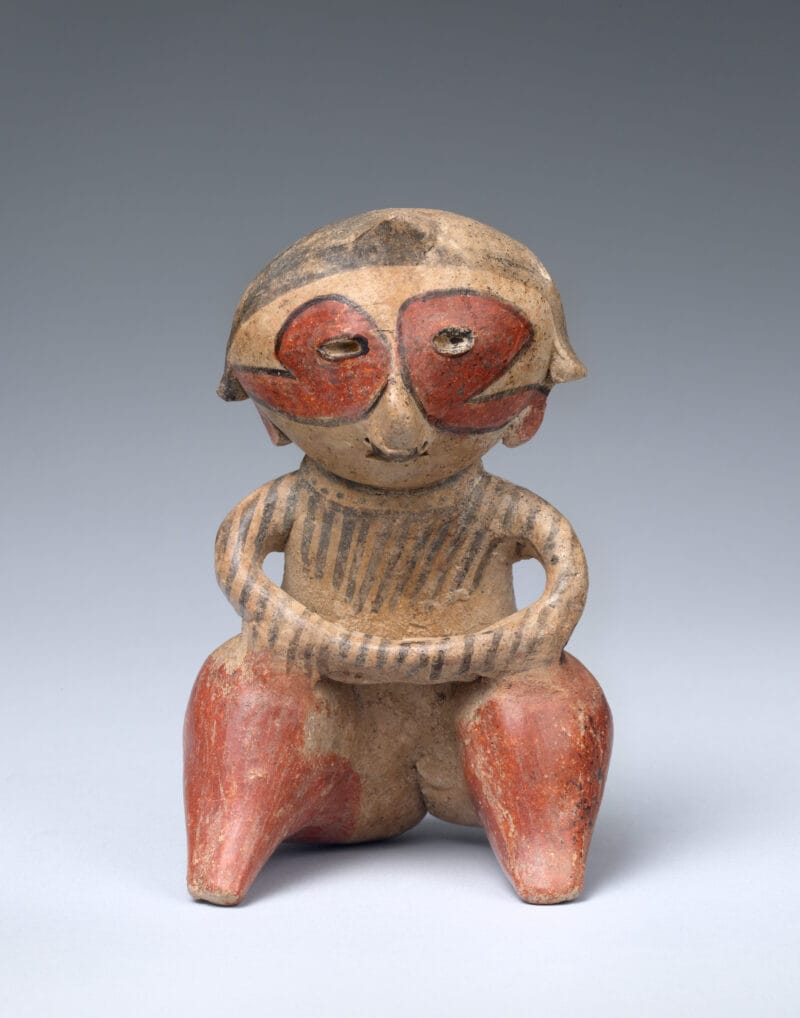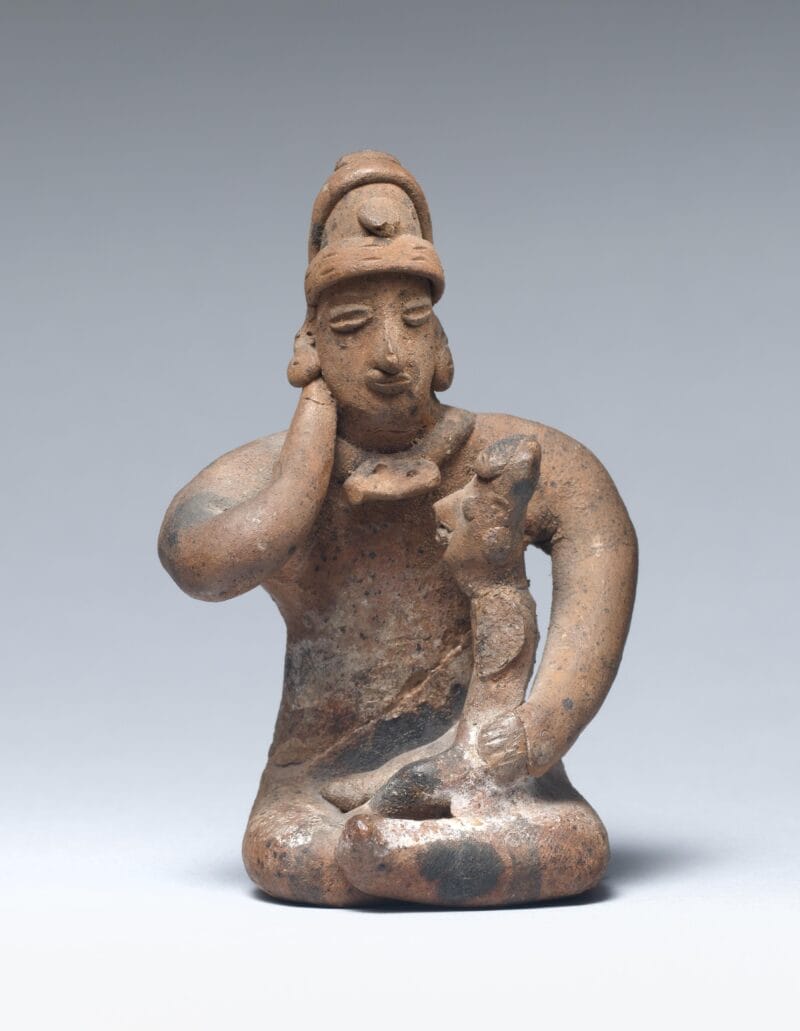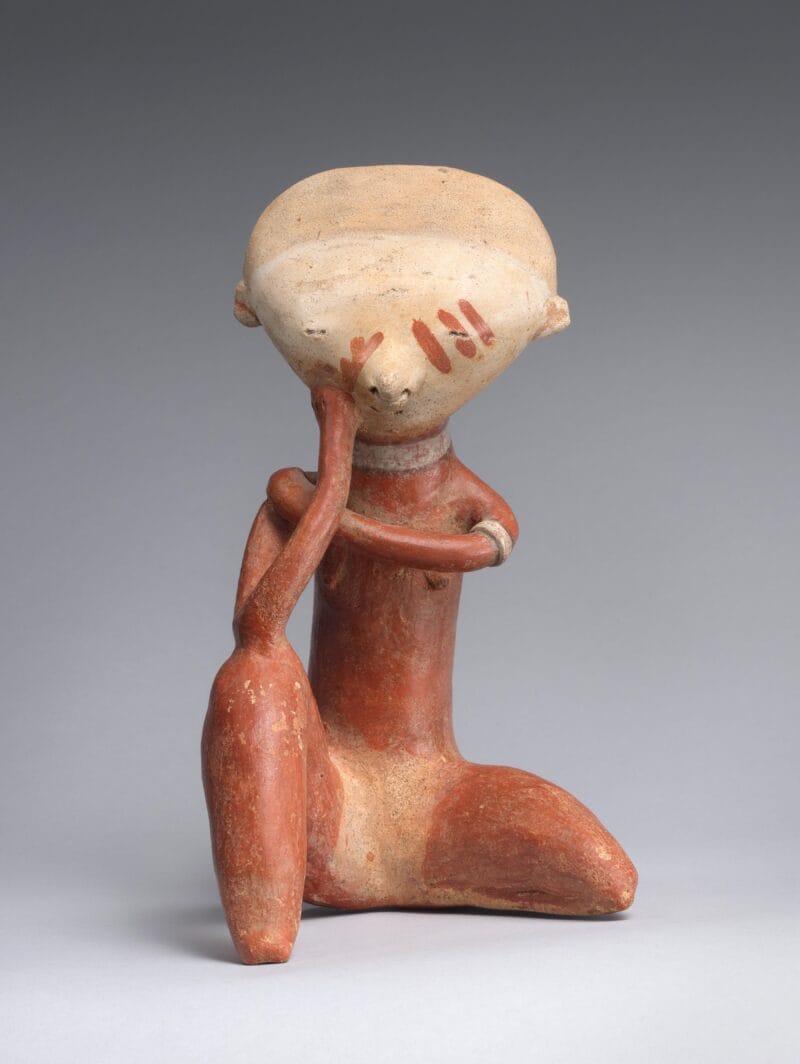
About the Object
The seated human figure seen here, perhaps in mourning for a deceased loved one, is created from a ceramic that has been glazed in a similar style to San Sebastian Red. The figure has tattoos on the face and may display possible cranial modification. It is similar to works found at sites such as Ixtlán del Río, a city in Nayarit that first emerged as a source of obsidian, which would have added to the wealth, prestige, and power of the region.
Additional Information
The Chinesco (Nayarit) tradition is related to similar pre-colonial west Mexican cultures that developed distinct cultural expressions from other areas of Mesoamerica. These cultures existed across what are today the Mexican states of Nayarit, Jalisco, and Colima. Distinctive ceramics and other material culture, noted by archaeologists and other scholars, concern ritual iconography associated with death as the works are usually found associated with shaft tombs. While often looted, these tombs usually date around 1500 BCE and contain individuals along with ceramic vessels and figures like this object.
[Sotheby’s New York, May 28, 1997, lot 338];
[Conlon Siegal Galleries, Santa Fe, NM];
The Jan T. and Marica Vilcek Collection, 1997-2010;
Gift to The Vilcek Foundation, 2010;
Sotheby’s New York, Pre-Columbian Art, May 28, 1997, lot 338.
Related Objects
You may also be interested in
Vilcek Foundation supports “Grounded in Clay: The Spirit of Pueblo Pottery”
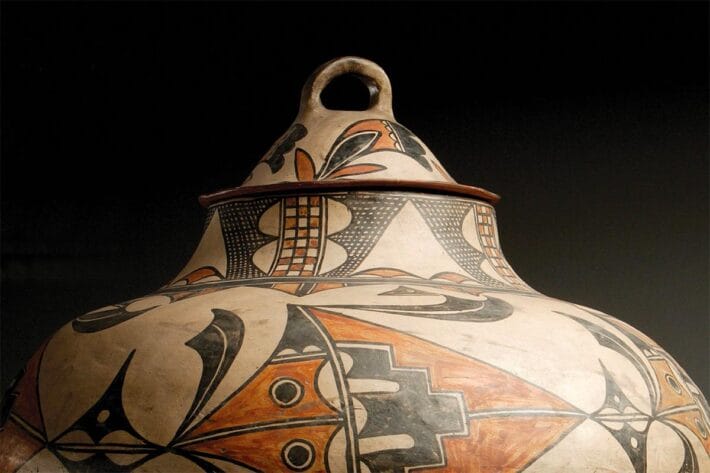
Ryo Toyonaga: Mephistophelean
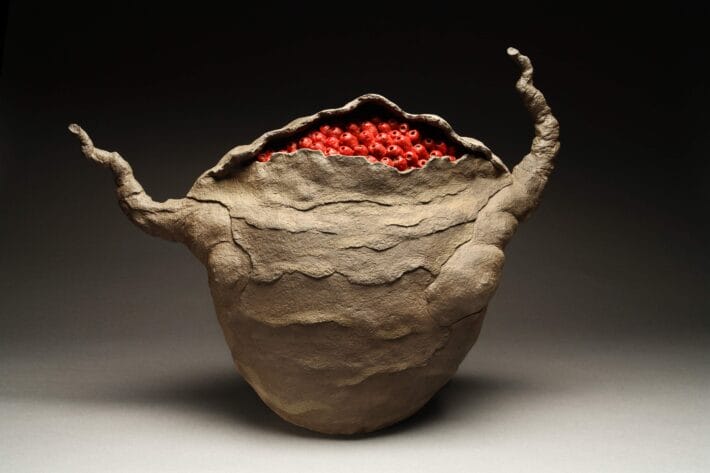
Meleko Mokgosi



